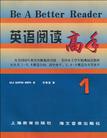英语阅读高手(1)
2002-9-1
上海教育
Nila Banton Smith
127
无
30多年来,《英语阅读高手》一直致力于帮助学生提高他们的阅读能力。该丛书主要阐述和讲解阅读和欣赏各种材料所需要的专门的理解和阅读技巧,这些材料包括图书馆里的各种图书,以及你在学校里学习的各种教材和文章。 为了充分使用本丛书,你首先需要了解本丛书的每个单元是如何组织的。在每个单元的前4课,你将会学习阅读文学、社会学、科学、数学等材料所需要的某一个重要的阅读技巧。每一课主要包括以下几部分: 背景资料(Background Information) 这部分主要介绍和本课阅读文章相关的一些背景知识,它将帮助你在阅读本课文章之前作好心理上和认识上的准备。 导读(Skill Focus) 这部分将给你讲解一个专门的阅读技巧。你应仔细阅读本部分,特别注意其中的黑体字。这个专门的阅读技巧在你阅读本课文章时将会派上用场。 词汇求索(Word Clues) 这部分将给你讲解如何识别和利用不同类型的上下文线索。这些线索可以帮助你理解本文章中划线单词的含义。
《英语阅读高手1》: 从美国培生教育出版集团引进 美国本土学生精典阅读教材本丛书1~5、6册适合初、高中水平,5、6~8册适合人学水平从全球最有影响的教育出版社——美国培生教育出版集团引进最先全面阐释英语阅读的各种专门技巧,并将这些专门的阅读技巧应用于社会科学、科学、数学、文学以及日常生活应用文的阅读训练和学习实践中,带你进入真实的欧美社会。词汇量大,涵盖面广,且词汇结构与国际盛行的标准化考试所要求的词汇十分吻合,可以迅速、全面增加你的词汇量。各种灵活的练习,其题型和目前全球通行的雅思考试(IELTS)的题型十分类似。帮你轻松备战同类型国际标准化考试每个单元都配有背景资料、导读、策略指导和单词注释等相关信息,帮助你全面、准确、快速地掌握阅读信息。既适合课堂英语精读或泛读教学,也适于个人自学。《英语阅读高手1》附有参考答案
Unit 1 From Here to There1. Understanding Character2. Identifying Main Idea and Details3. Drawing Conclusions4. Solving Word Problems5. Recognizing Consonant Sounds6. Recognizing Long and Short Vowel Sounds7. Recognizing Plural Nouns8. Reading Maps9. Using a RecipeUnit 2 Problems and Solutions10. Understanding Plot11. Identifving Stedas in a Process12. Comoaring and Contrasting13. Understanding Percents14. Recognizing Consonant Blends15. Recognizing Long Vowel Sounds16. Recognizing Contractions17. Recognizing Words with Multiple Meanings18. Reading Graphs19. Using a Bus ScheduleUnit 3 Time For Courage20. Inferring Setting21. Identifying Fact and Opinion22. Identifying Cause and Effect23. Reading Metric Terms24. Recognizing r-Controlled Vowel Sounds25. Recognizing Silent Letters26. Recognizing Possessive Nouns27. Recognizing Prefixes and Suffixes28. Reading Tables29. Using the Yellow PagesUnit 4 Past and Present30. Inferring Theme31. Identifying Cause and Effect32. Making Generalizations33. Solving Word Problems34. Recognizing Hard and Soft c and g35. Recognizing Compound Words36. Using Parts of a Book37. Reading Diagrams38. Using a Classified AdUnit 5 Other Worlds39. Understanding Conflict and Resolution40. Identifying Main Idea and Details41. Identifying Sequence of Events42. Reading Mathematical Terms and Symbols43. Recognizing Vowel Digraphs44. Recognizing Diphthongs45. Recognizing Syllables46. Using a Dictionary Entry47. Reading a Food Label

无